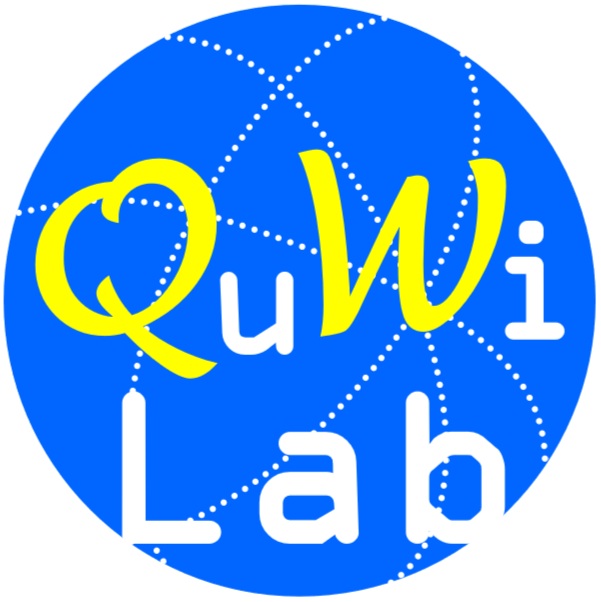



|

|

|
|
|
Research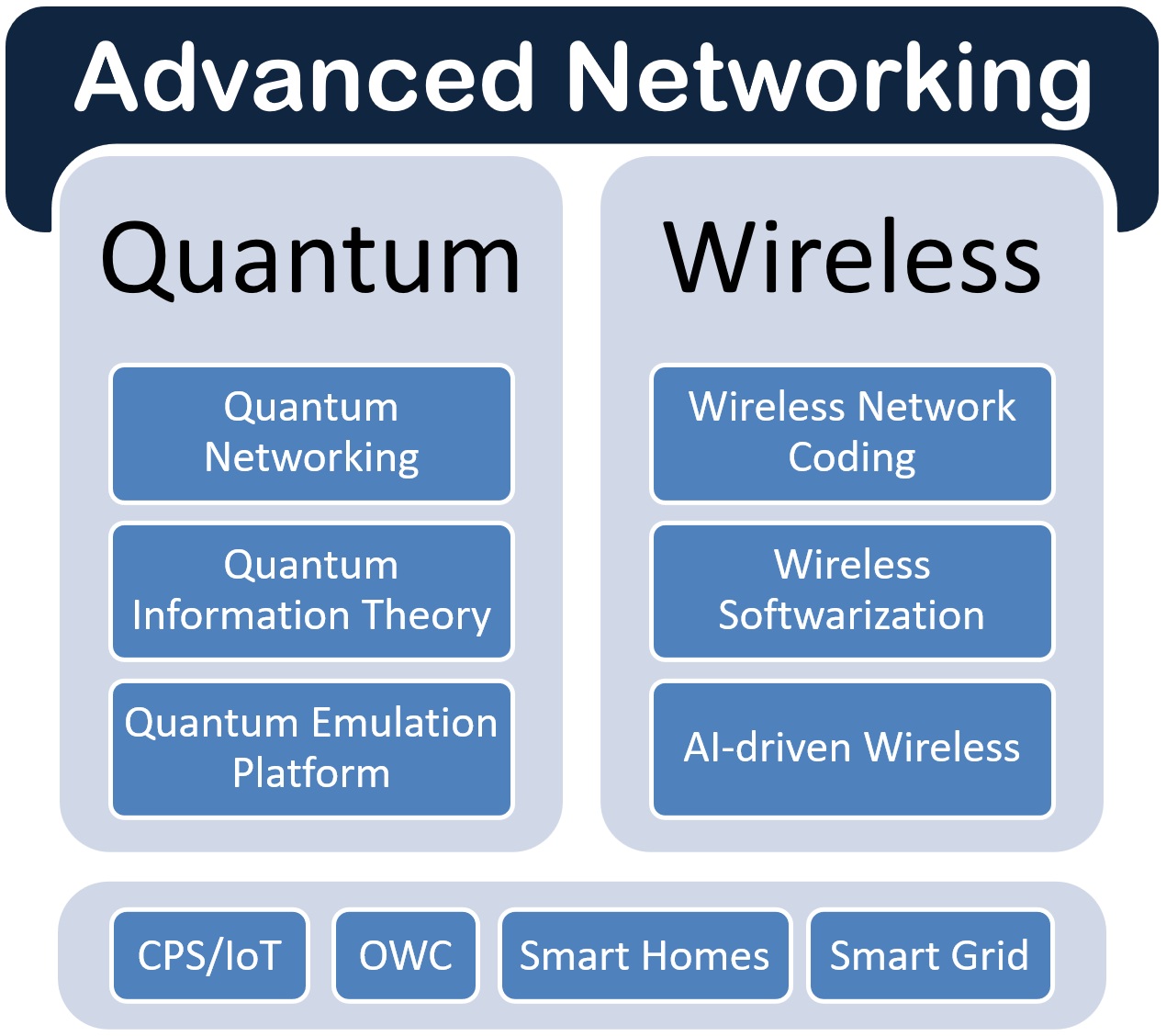
The QuWi Laboratory conducts research across a range of fields, with a central focus on advanced networking technologies in the quantum and wireless domains. In addition to these core areas, our work extends into diverse yet interconnected topics, including sense-control-actuate systems, wireless optical communications, smart home technologies, and intelligent energy distribution systems. By bridging these areas, we aim to develop holistic solutions that contribute to the realization of next-generation networked environments and sustainable, intelligent infrastructures.
A. Future Quantum Internet |
||||||||||||||||||||||||
Quantum communication allows the transmission of qubit information from one node to another node over long distance. In order to exchange this information successfully, a fidelity guarantee of end-to-end entanglement connection should be established first. Second, how to select an entanglement routing path while utilizing the network resources efficiently as the preliminary stage of large-scale quantum network development. In this research topic, the classical error correction that employs redundancy, i.e., the repetition code is used to store the information multiple times is used in quantum communication to recover quantum information from errors due to decoherence and other quantum noise. Possible research topics are:
|
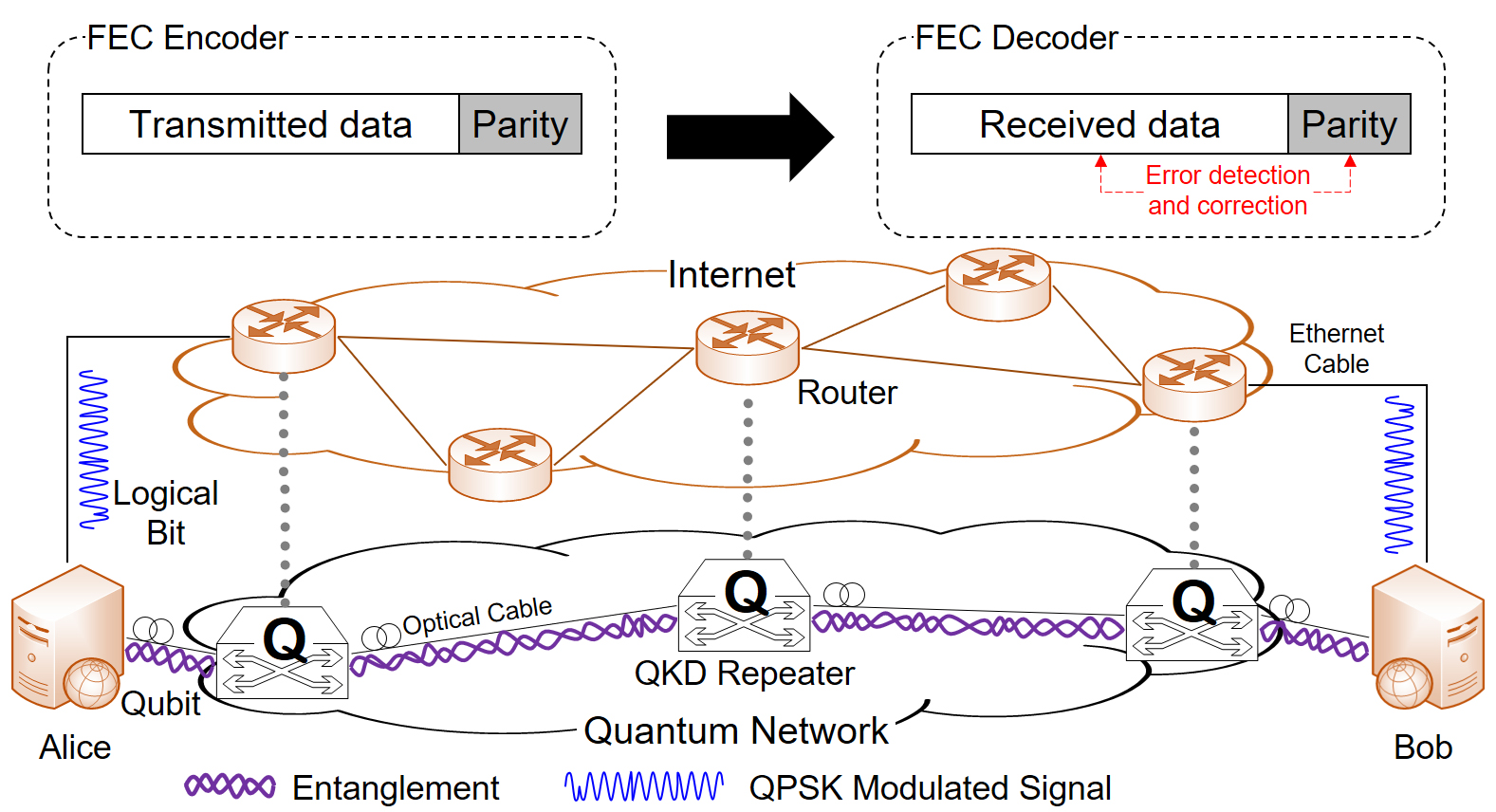
|
2. Quantum Information Theory
Quantum Information Theory is a foundational research field that studies how information is represented, processed, and transmitted using quantum mechanical systems. It extends classical information theory by leveraging uniquely quantum phenomena?such as superposition, entanglement, and non-locality — to develop new principles and capabilities for computation, communication, and cryptography. This field not only provides the theoretical underpinning for quantum technologies but also drives the design of efficient and secure quantum communication protocols and algorithms. Possible research topics are:
|
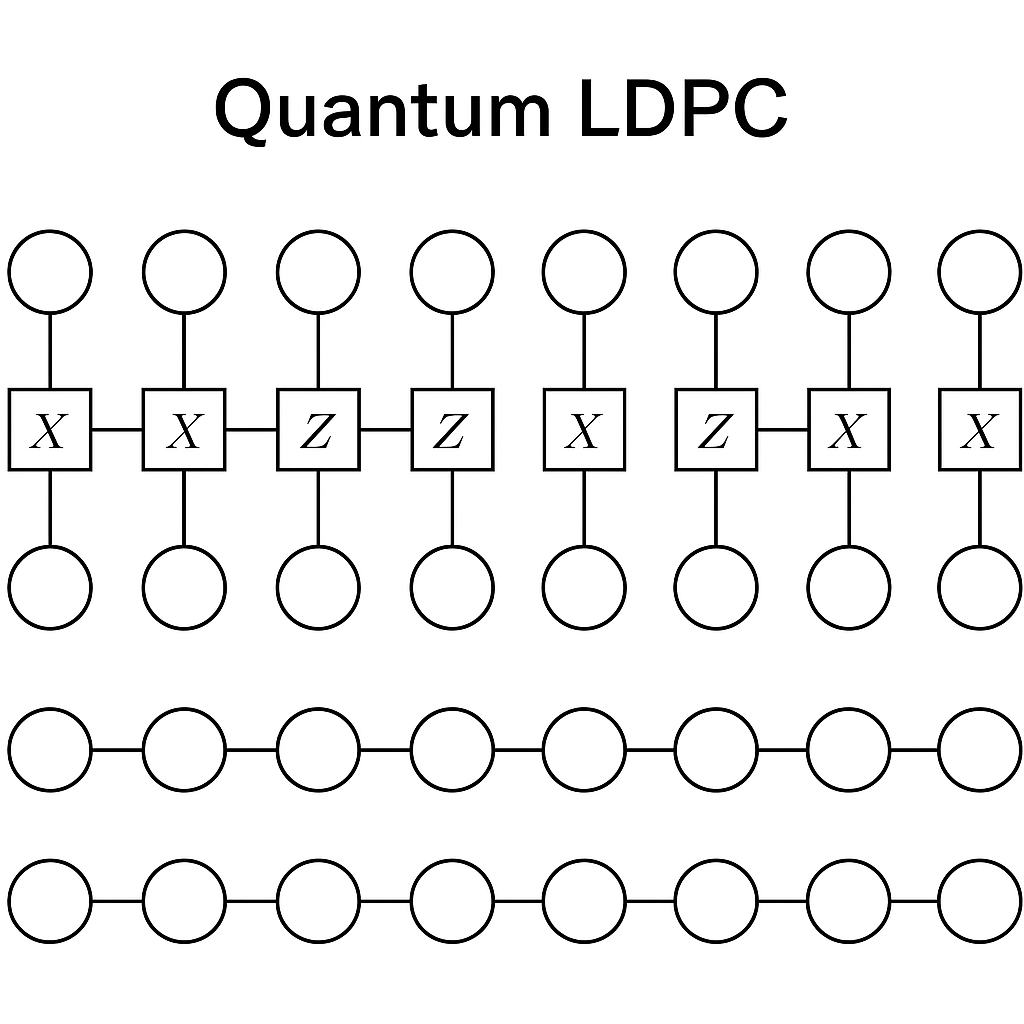
|
3. Quantum Emulation Platform
Quantum network emulation is a sandbox tool of investigating the quantum communication technology for our future next generation communication networks. This emulation tool is used to not only examine the principles pf quantum mechanics to facilitate the development of quantum networks in the aspects of quantum information sources, quantum memories, quantum repeaters, and quantum detectors, but also look into distinctive features of quantum mechanics, such as superposition and entanglement, to attain, develop and test protocols for quantum networks in a large-scale manner. Possible research topics are:
|
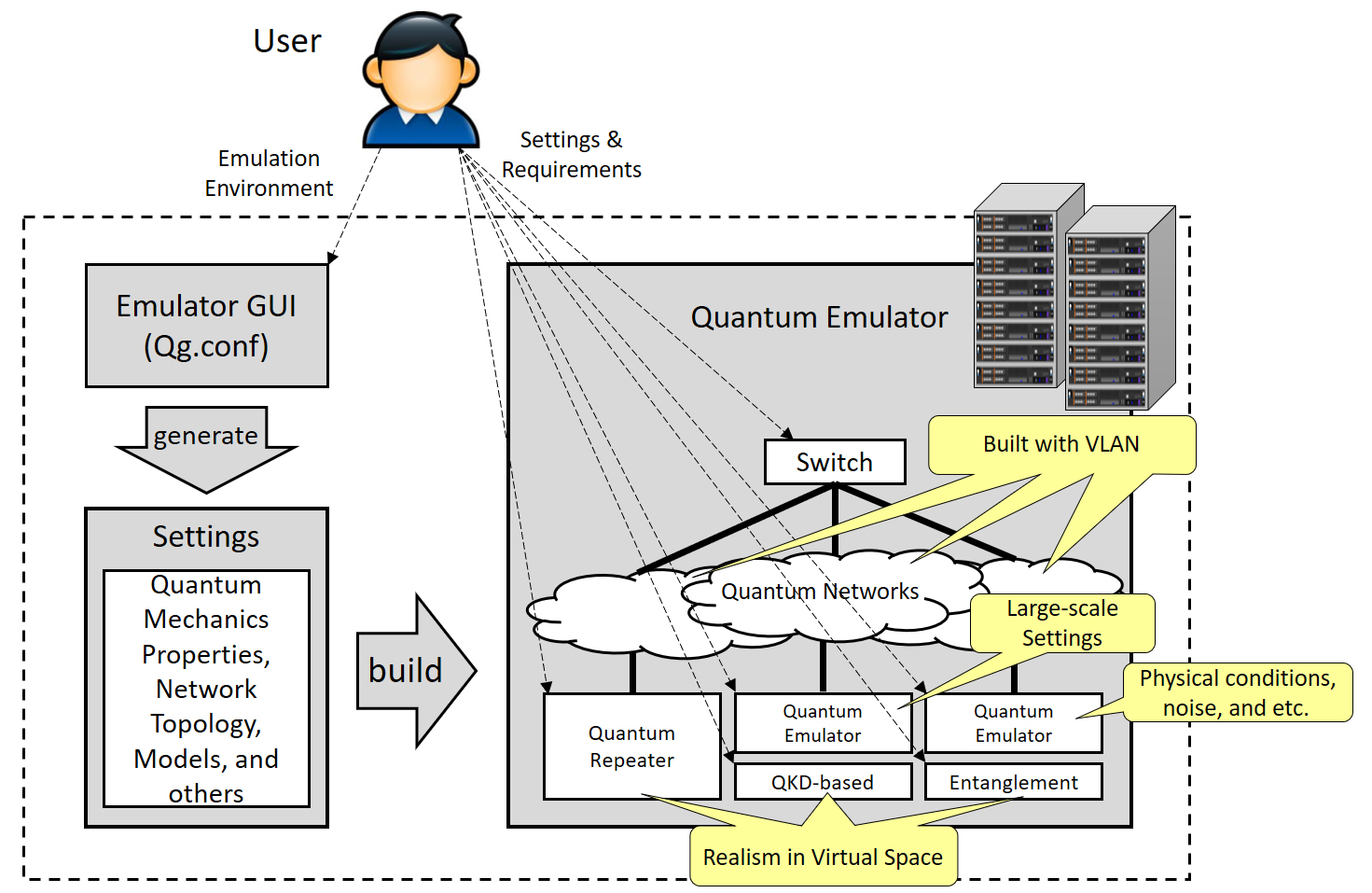
|
4. Wireless Network Coding (WNC)
WNC refers to a technique where a wireless device is allowed to generate output data by mixing its received data. The unique characteristics of wireless medium renders WNC particularly advantageous, e.g., this technique can be used to achieve the minimum energy-per-bit for multicasting in a multihop wireless network. Recently this technique has been developed into a link layer enhancement scheme. The WNC engine in the link layer can opportunistically mix the outgoing packets to reduce the transmissions in the air. Possible research topics are:
|
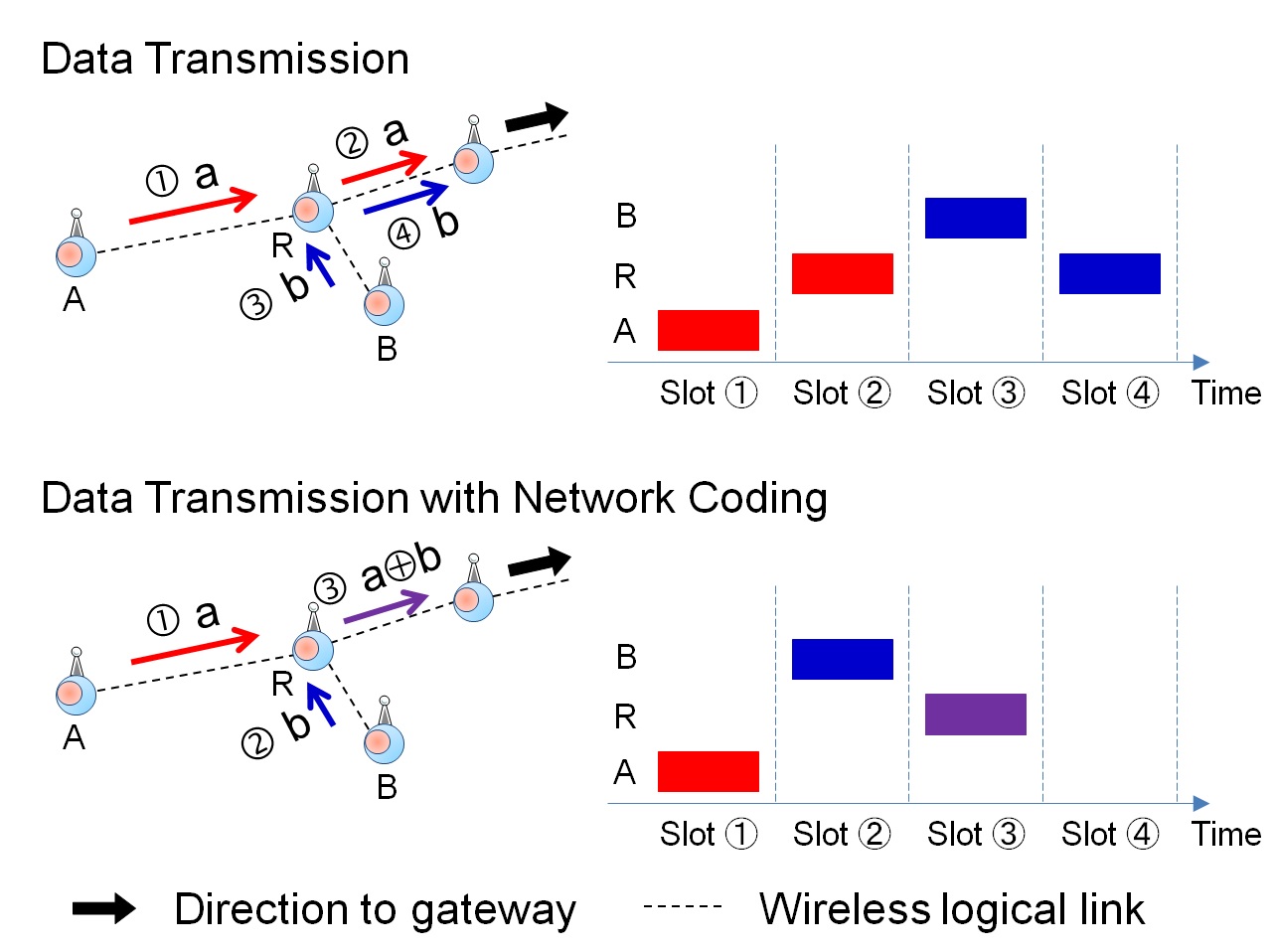
|
5. Wireless Softwarization
Network softwarization facilities the idea of network slicing, which separates the software implementing network functions, protocol, and services from the associated hardware running on them. Software-Defined Networking (SDN) and Network Function Virtualization (NFV) are the maturity technologies for realizing the network softwarization, in which it only enables cost-effectiveness and innovative service creation, but also radically changes the way communication infrastructures. Possible research topics are:
|
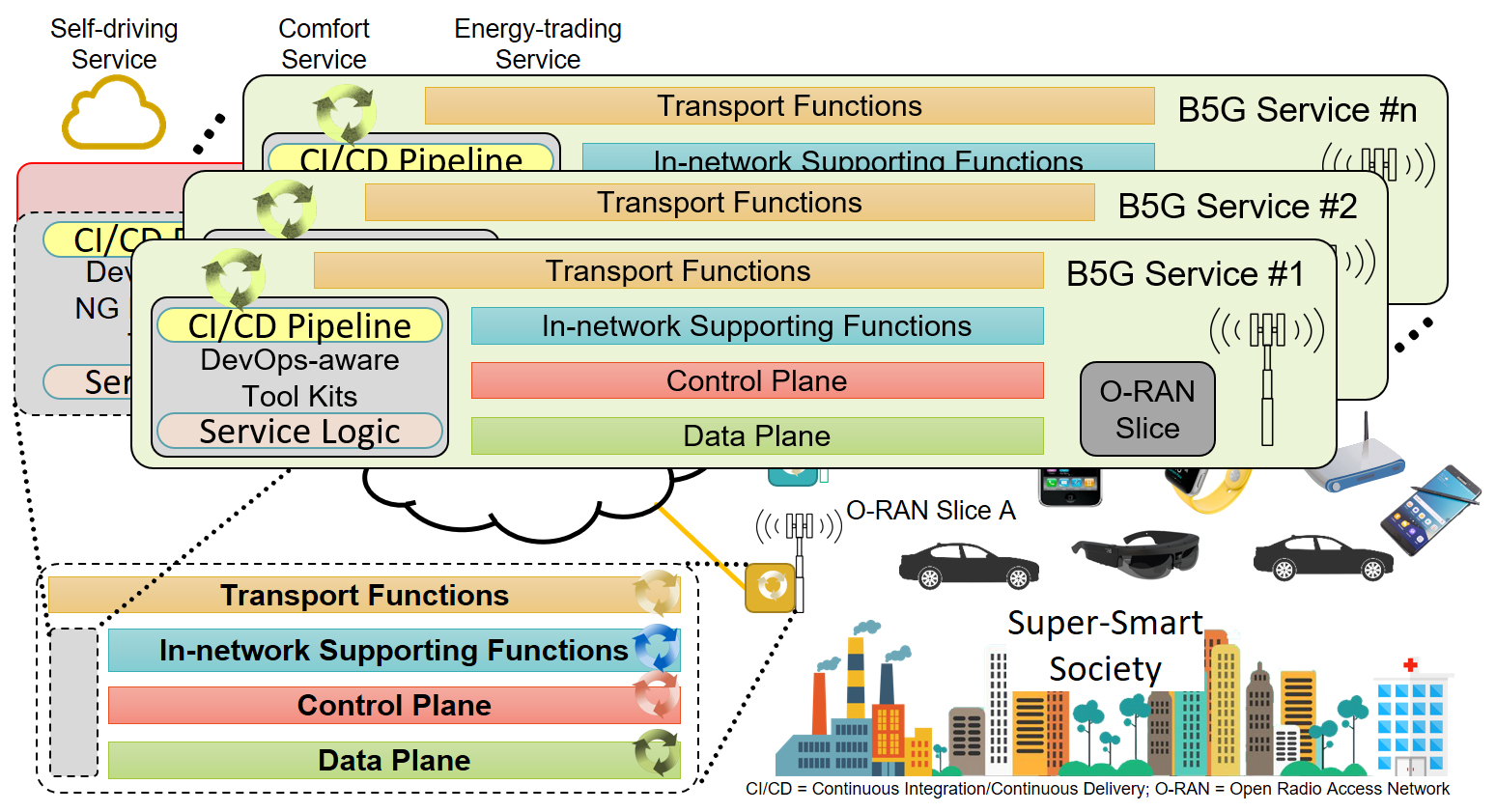
|
6. AI-driven Wireless
Artificial intelligence (AI) is increasingly being considered as a promising solution to a wide range of problems in wireless communications. For example, a trained deep neural network can well extract the statistical properties of the transmitted data and therefore be implemented to perform accurate signal detection which also requires much shorter processing time compared to traditional methodologies based on iterative signal processing. In this research topic, AI related algorithms will be implemented in both radio frequency (RF) and optical communications to significantly improve the system performance in many aspects such as data detection accuracy, transmission bandwidth efficiency, latency, power consumption. Possible research topics are:
|
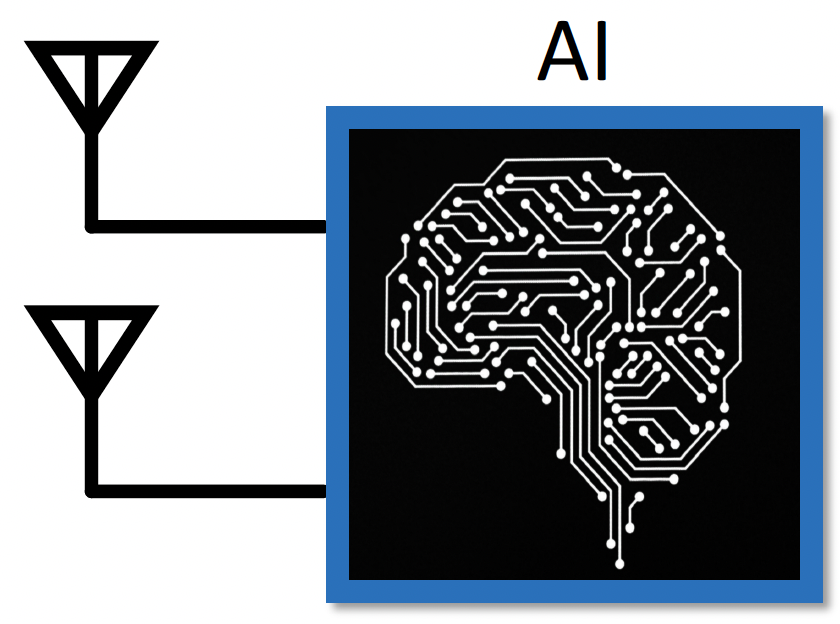
|
7. Cyber-physical Systems (CPS)
CPS is defined as a system involving the close integration of the cyber world and physical environments. CPS will contribute to safety, efficiency, comfort and human health, and help solving key challenges of our society, such as the ageing population, limited resources, mobility, or the shift towards renewable energies. One example of CPS applications is an intelligent home automation for comfort control. In home networks, appliances, devices, and sensors are expected to help people live on their own comfortable. The sensors pass information among themselves and to a sink. The gathered data is analyzed to infer activities of daily living, which can give important clues to a person's state of comfortable, relax, restful, and pleasant. Possible research topics are:
|
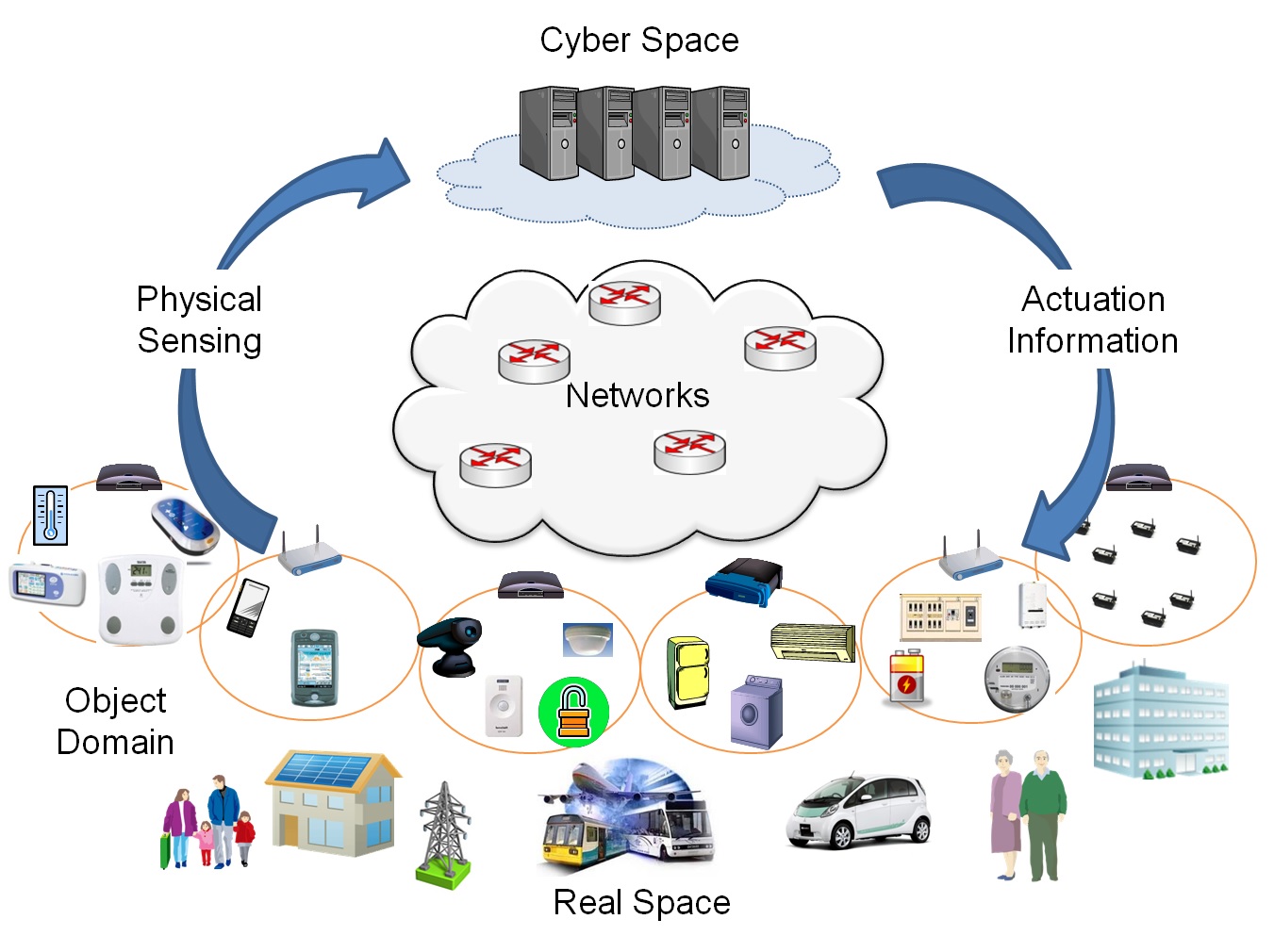
|
8. Internet of Things (IoT)
IoT is a dynamic global open network infrastructure with self-configuring or intelligent capabilities based on standard and interoperable communication protocols, in which the physical and virtual "things" have identities, physical attributes and virtual personalities and use smart interfaces and are seamlessly integrated into the information network. IoT becomes the primary driving force of the expansion of Internet-connected automation for a plethora of newborn application areas today. IoT also is one of the platforms of today's smart cities and smart energy management systems. Possible research topics are:
|
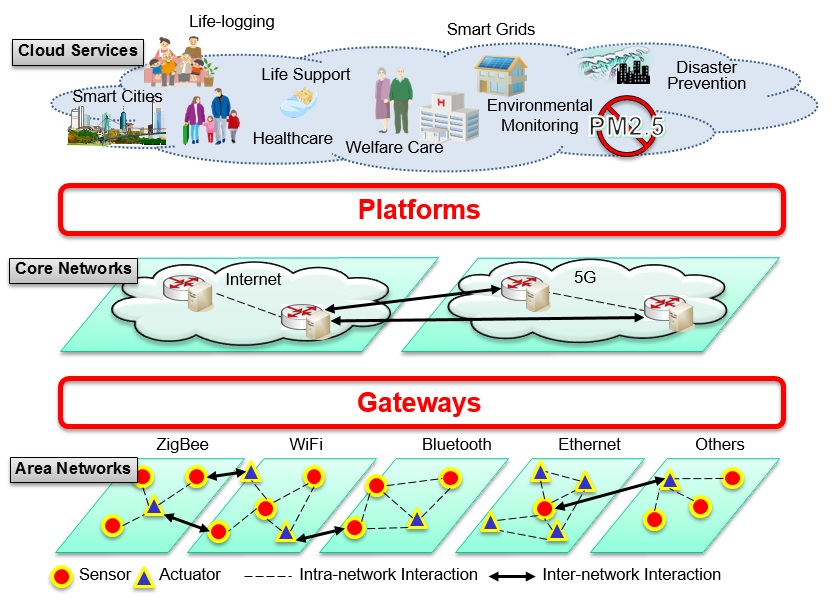
|
9. Optical Wireless Communication
Due to the exponentially growing number of Internet of things (IoT) devices, wireless network using radio frequency (RF) spectrum is now limited by its transmission bandwidth. One of the most efficient solutions to this problem is to use the license-free optical spectrum for wireless communication. This trending technology is known as optical wireless communication or visible light communication. In this research topic, light sources (such as LEDs or lasers) are used as data transmitters. The transmitted data is directly modulated onto the intensity of the light and transmitted through a wireless channel. The performance of the system will be analyzed through both simulations and experiments. Possible research topics are:
|
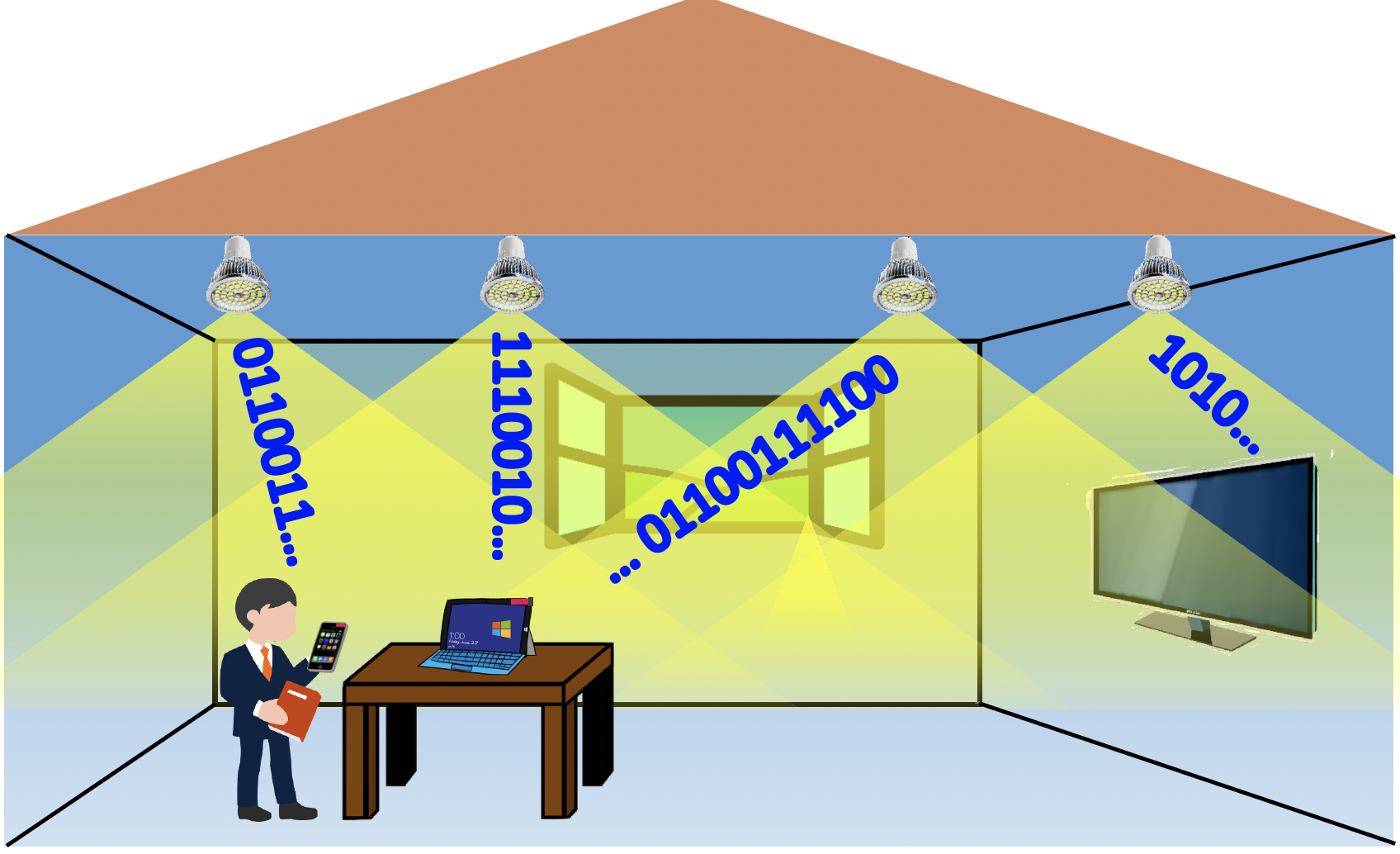
|
10. Smart Homes
A personal thermal comfort (PTC) model is a novel approach to predict the thermal sensation of an individual rather than a group of people. The relationship between the environmental and human factors of this model is not well investigated in the smart home domain. Moreover, the difficulties on collecting feedback of personal thermal sensation, especially neutral comfort, and the requirements of data size can lead to the failure of thermal comfort system to fulfill the individual's comfort preference. Besides that, the psychological parameters are not always available for the continuous satisfactory control of a heating, ventilating, and air conditioning (HVAC) system in a timely manner. This research explores the energy efficient thermal comfort control (EETCC) system to improve individual's thermal comfort level while optimizing the HVAC energy consumption at the same time in smart home environments. Possible research topics are:
|
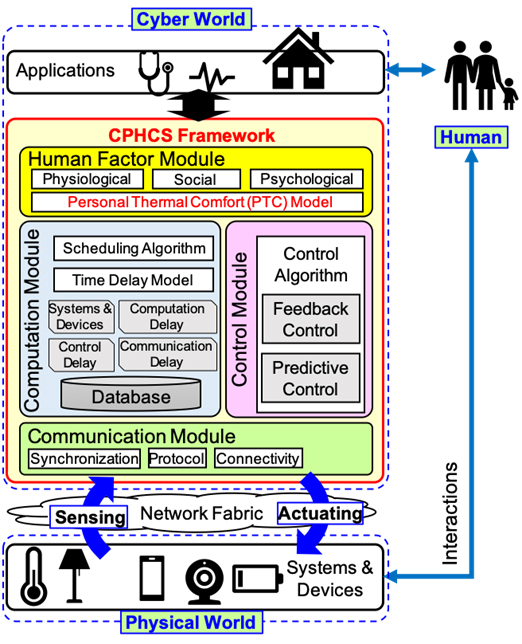
|
11. Packetized Energy Management (PEM)
Today, the power usage of all home appliances has been improving due to the introduction of Internet of Things (IoT) and Power over Ethernet (PoE) technologies. This makes it possible to turn ON/OFF the power of home appliances remotely and monitor the home energy consumption on a real-time basis. As people's activities in a house are becoming more complicated, it is necessary to ensure the proper energy management and control when the shortage from renewable power sources occurs. Besides that, this also leads to an indispensable for the introduction of power storage systems due to the problem of intermittency and power fluctuations in the renewable power sources. As a result, not only balancing the power supplies and demands in the home environment is a promising trend of future home energy management system (HEMS), but also it is a significant challenge to improve the power generation efficiency by designing an optimum storage capacity in the presence of power fluctuations before the installation phase. Possible research topics are:
|
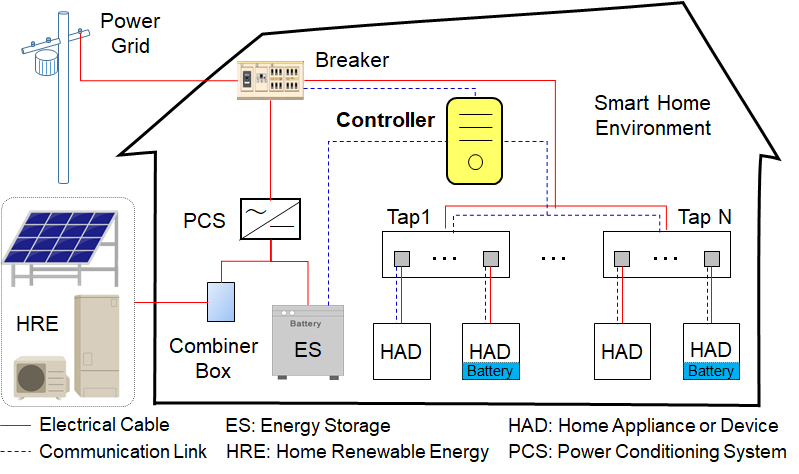
|
12. Smart Energy Network (Smart Grid)
Home energy management system (HEMS) is a system that includes all the necessary elements to achieve the reduction of electricity consumption in home environments. HEMS that is one of main elements in the smart energy network, in which it is able to communicate and manage the rest of the home appliances and offers an alternative and renewable energy to reduce the entire electricity consumption. The goals of the smart energy network is to provide a real-time information exchange in order to optimize energy distribution by cooperatively controlling energy demand and supply and self-healing for energy restoring. Possible research topics are:
|
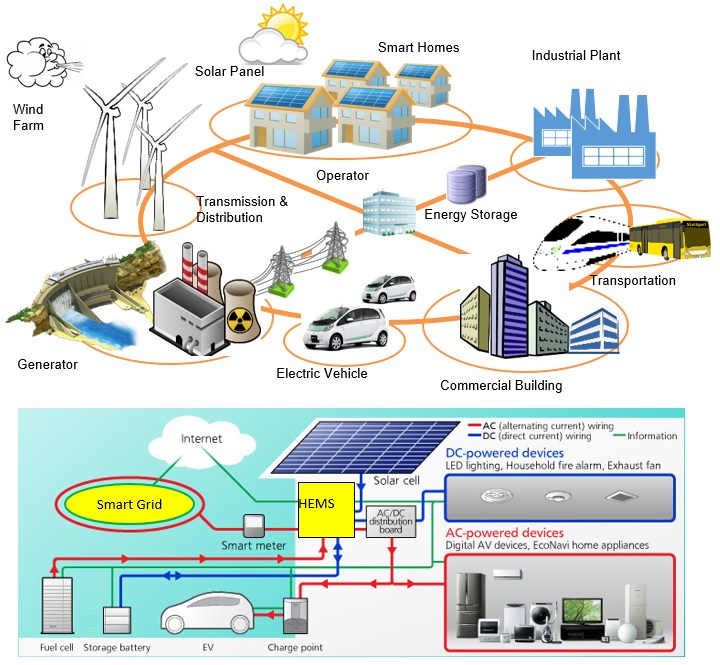
|